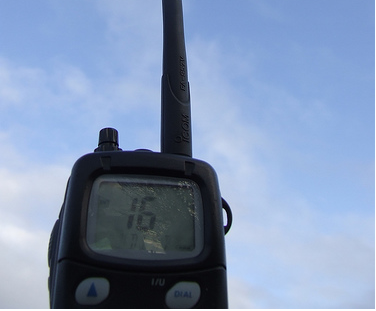Saving Lives & Your Cell Phone – Golden Shellback Coating
Last year Sid Martin, Director of Technology at Northeast Maritime Institute was faced with a dilemma. He had been hired to spearhead a project bringing the latest technology to the field of Maritime Security and test it in the field. Martin was the perfect candidate for this job. Prior to working at NMI he was a member of the project team responsible for the wheel bearings on the Mars Lander and in doing so became familiar with the obstacles faced in developing products for use in harsh environments. But the project was nearing completion and he needed to find new ways to use his experience at the institute. In the coming months Martin set his goal at saving lives, what he developed will accomplish more than that.
GS- Apartment Rental 160 East 91st Street, NYC
Martin’s background is not in Maritime Engineering, in fact, except for one vacation at sea he has never set foot on a large vessel underway. His specialty is Aerospace technology. Martin was on the team that designed and built some of the critical components aboard the Mars Rover and worked for years in the manufacturing of semiconductors. During this time he gained both experience coating objects at a molecular scale and an idea; use these principals to waterproof electronics.
An idea alone is not enough to invent a ground breaking product; you need resources and a team that supports innovation. Martin found this combination at Northeast Maritime Institute and one year ago joined it’s team as Project Engineer and with the backing of NMI President Eric Dawicki he began work on techniques learned during time spent in the semiconductor industry applying coatings to surfaces at the molecular level. Up to this point marine electronics were separated from the corrosive and conductive properties of salt water with the use of protective shells. A waterproof radio for example, combines a protective shell with plastic coating and gaskets to keep water away from sensitive electrical components. This works fairly well provided you maintain the watertight integrity of the unit but it’s expensive to manufacture and maintain, not to mention the extra weight and bulk it adds to the device itself. Damage the shell or service the components in harsh conditions and that protection is useless.
Martin’s idea was different. By merging his experience in harsh weather design with his knowledge of semiconductors he developed a new coating that provides direct protection to both internal and external components of a device regardless of size. The process itself is a closely guarded secret but results in a ultra thin yet durable protection at the molecular level.
To test this claim I visited NMI’s workshop in Fairhaven Massachusetts and asked him for a personal demonstration. The results were simply astounding. Standing above a 5 gallon bucket of water Martin picks up a working Balckberry phone and drops it straight into the salt water. Minutes later he removes the device and makes a call with the water still pouring out of the keypad. As if this was not impressive enough he proceeds to pour what remains in the bucket onto his Dell laptop computer. He then remarks, “The possibilities are endless. Not only are the internal components protected but the CPU is actually being cooled by the water inside the case!”
The possibilities are exciting indeed and to help convince me (as if that was still required) he refills the bucket and begins dunking the other items he has coated. First in was a 372 year old letter sent to mariner from his wife, then he dunks an ipod touch and finally compares two sets of stainless steel bolt; one exposed to salt water and the other not. The difference was noticeable.
What’s excites Martin the most about Golden Shellback? Meeting his goal of saving lives. “By coating the UHF radios mariners routinely take out on deck we are confident, by making them splash proof, they will continue to operate during man overboard situations providing a lifeline to the bridge team,” said Martin.
Regardless of the next product to be tested Martin is currently looking for companies wishing to employ this technology in the manufacturing process. Otherwise he hopes to team up with retailers and offer the coating as a service provided in-store. If all goes according to plan it won’t be long until you can take your new iPhone on deck and amaze your fellow crewmembers with a demonstration. Did we mention it hopes to make common electronics intrinsically safe too?
Expect NMI’s Golden Shellback is currently available as an upgrade to a limited but expanding set of products.
This article was originally written for The Council Of American Master Mariner’s quarterly magazine Sidelights. The original version can be found HERE.

Subscribe for Daily Maritime Insights
Sign up for gCaptain’s newsletter and never miss an update
— trusted by our 109,185 members

Get The Industry’s Go-To News
Subscribe to gCaptain Daily and stay informed with the latest global maritime and offshore news

 Join The Club
Join The Club







